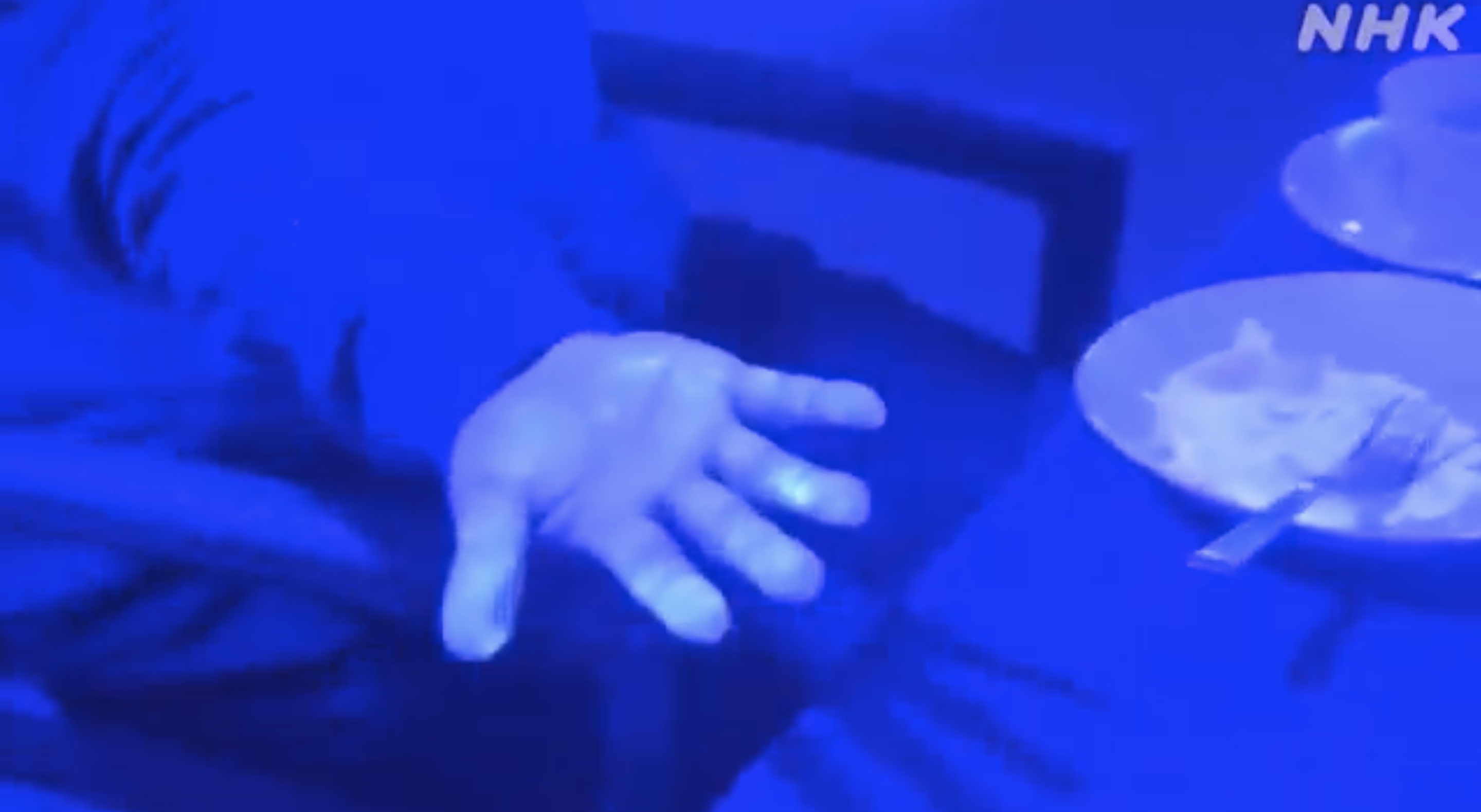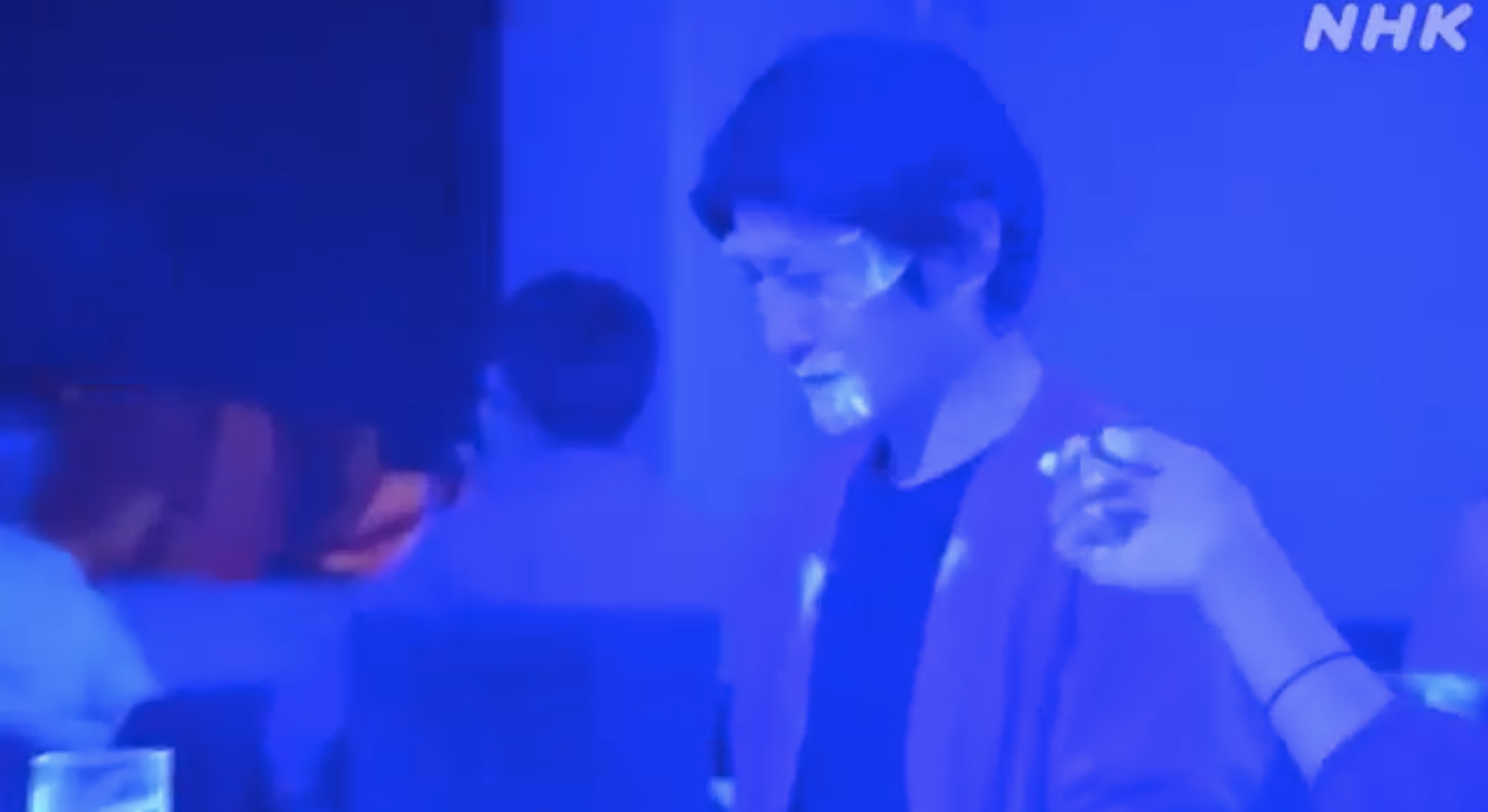Japanese public broadcasting organisation NHK conducted an experiment to see how germs spread at a cruise buffet, in collaboration with infectious disease experts. The network’s video of the experiment went viral, especially after a short slip emerged on Twitter.
For the experiment, a buffet scenario was recreated to imitate the buffet you’d get at travel industries like cruise lines and resorts. Ten participants were asked to serve themselves at the ‘buffet’, but invisible fluorescent paint—visible only under a black light—was applied to the palm of one person.
That person with the paint represented an ‘infected’ person who had coughed into his hand, and the paint represented the virus. All the participants were then allowed to enjoy the buffet freely for 30 minutes.
After 30 minutes, the room was darkened and under ultraviolet light. The experimenters were then able to see the traces of the paint spread amongst the participants.
After the ‘infected’ person touched various items, including a lid covering on a hot food container, a pair of tongs, and the handle of a beverage pitcher, the paint was transferred to a wide array of items, including silverware, dishes, glassware, clothing and mobile phones. Several participants even had paint on their hands and three had paint on their faces.
The tweet that posted a short clip of the viral video was shared more than 41,000 times, and received comments that shared how shocking it was to realise how fast COVID-19 can spread:
This shows how futile it is to try and stop the spreading of viruses and germs. Eating healthy and get the right vitamins to support you immune system is the best way to avoid getting sick.
— Miniskunk (@miniskunkz) May 8, 2020
This is goddamn terrifying
— Jeff Atwood (@codinghorror) May 8, 2020
However, besides what we see in the short clip, the original programme also showed an alternative version of the experiment. Dishes were separated, tongs were replaced frequently, and diners were encouraged to clean their hands before, during and after the meal. In that scenario, the paint didn’t attach to any of the other participants like it did before.
“A place where the unspecified majority can easily touch is called a high-touch surface, which harbours danger. I want you to be aware of the risks and take appropriate measures,” said Professor Hiroyuki Kunishima of St. Marianna University School of Medicine.
This shows the importance of washing your hands frequently and avoid touching your face, especially if you’re eating out during this pandemic. Avoid open buffets when you can, find a less crowded spot, and stay at home if you feel sick as an added measure. Safety measures must be taken even when receiving goods or meals.










